
Greetings! I would like to welcome everyone to the Covenant of Babylon blog page. If this is your first time here, please feel free to review some of our previous articles and share your insights and comments. Stay Blessed.
Having in the past months posted many things on astrology, I have been asked to make up a course on astrology. So far a great deal of work has been put into this endeavor. I have outlined a 3 part beginner course of 26 lessons and a 2 part advanced course. I am currently writing 2 books to go with these lessons as well. I will be using the Mesopotamian names of the stars and constellations within the course work and am today gracing our community with a nice listing of the known stars through a 900 year period of the Babylonians.
Chronology:
(1) The Late Assyrian Period (circa 900-600 BCE)
(2) The Neo-Babylonian (Chaldean) Period (626-539 BCE)
(3) The Persian (Achaemenid) Period (539-331 BCE)
(4) Macedonian Period (331-circa 275 BCE)
(5) Seleucid (Hellenistic) Period (275 BCE – 116 CE)
=========================================
Some Late 2nd-Millennium Stars
Example: Star List/Star Catalogue (Select Mul.Apin Stars/Constellations).
Example: The Circumpolar Stars And Constellations.
Source: Mul Apin by Hermann Hunger and David Pingree (1989).
In MUL.APIN six circumpolar stars are counted in the Path of Enlil. Since the Paths of Enlil, Anu, and Ea are defined by the arcs on the eastern horizon over which the stars, Sun, Moon, and planets rise, the circumpolar stars ought not to be counted among the stars of Enlil.
1. (15) The Wagon. Ursa Major.
2. (16) The Fox. 80-86 Ursae Maioris?
3. (17) The Ewe. Northeastern part of Bootes?
4. (18) The Hitched Yoke. a Draconis?
5. (19) The Wagon of Heaven. Ursa Minor.
6. (20) The Heir of the Sublime Temple. a Ursae Minoris?
Example: Stars in the Path of the Moon.
Source: Science Awakening II: The Birth of Astronomy by Bartel van der Waerden (1974).
The Stars and Constellations in the Path of the Moon.
1. MUL.MUL
2. mulGUD.AN.NA
3. mulSIBA.ZI.AN.NA
4. mulSHU.GI
5. mulGAM
6. mulMASH.TAB.BA.GAL.GAL
7. mulAL.LUL
8. mulUR.GU.LA
9. mulAB.SIN
10. mulzi.ba.ni.tum
11. mulGIR.TAB
12. mulPA.BIL.SAG
13. mulSUHUR.MASH
14. mulGU.LA
15. zibbatimesh
16. mulSIM.MAH
17. mulA-nu-ti-tum
18. mulLU.HUN.GA
The number 18 is not quite certain because the “tails” zibbatimesh are probably to be taken together with both the following names (“tails of SHIM.MAH and Anunitum).
If we omit the six names GUD.AN.NA (Taurus), SIBA.ZI.AN.NA (Orion), SHU.GI (Perseus + and northern part of Taurus?), GAM (Auriga or Capella), SHIM.MAH (south-west part of Pisces) and Anunitum (north-east part of Pisces), those remaining are exactly the Babylonian names of the later signs of the zodiac, beginning with Taurus (MUL.MUL, actually Pleiades), and continuing in sequence to Aries (LU.HUN.GA).
In later times the zodiacal signs were named after the constellations they contained. In the beginning there were certain variations: the sign of Taurus could be denoted equally well by the names MUL.MUL (Pleiades), GUD.AN.NA (Taurus), or is li-e (Hyades – Aldebaran); it was only later that the names became standardized.
Example: Ziqpu Star List.
Source: Science Awakening II: The Birth of Astronomy by Bartel van der Waerden (1974).
The ziqpu stars lie in the path of Enlil. (Some) Ziqpu stars listed in Mul.Apin.
SHU.PA
BAL.UR.A
AN.GUB.BAmesh
UR.KU.UZA
UD.KA.DUH.A
LU.LIM
SHU.GI
GAM
MASH.TAB.BA.GAL.GAL
AL.LUL
UR.GU.LA
ERU
HE.GAL.A.A
Example: The 36 Morning Risings (Mul.Apin).
Source: Science Awakening II: The Birth of Astronomy by Bartel van der Waerden (1974).
Month 1 day 1 LU.HUNGA rises.
day 20 GAM rises.
Month 2 day 1 MUL.MUL rises.
day 20 is li-e rises.
Month 3 day 10 SIBA.ZI.AN.NA and MASH.TAR.BA.GAL.GAL rise.
Month 4 day 5 MASH.TAB.BA.TUR.TUR and AL.LUL rise
day 15 KAK.SI.DI, MUSH and UR.GU.LA rise
Month 5 day 5 BAN and LUGAL rise.
Month 6 day 10 NUNki and UGA rise.
day 15 SHU.PA rises.
day 25 AB.SIN rises.
Month 7 day 15 zibanitu, UR.IDIM, EN.TE.NA.MASH.LUM and UR.KU rise.
Month 8 day 5 GIR.TAB rises.
day 15 UZA and GAB.GIR.TAB rise.
Month 9 day 15 UD.KA.DUH.A, Amushen and PA.BIL.SAG rise.
Month 10 day 15 SHIM.MA, shi-nu-nu-tum and IM.SIS. rise.
Month 11 day 5 GU.LA, IKU and LU.LIM rise.
day 25 Anunitu rises.
Month 12 day 15 KUA and SHU.GI rise.
The best fit is obtained for Babylon between 1300 and 1000 BCE.
Example: Planet Names (Mul.Apin Series).
Source: Mul Apin by Hermann Hunger and David Pingree (1989).
Planet Name(s)
Sun dUTU (Samas)
Moon dSin
Saturn UDU.IDIM.SAG.US (the stable planet
zibanitu (Scales)
MUL dUTU (Star of the Sun)
Jupiter Sagmegar
dSulpaea
dAMAR.UTU (Marduk)
Mars Salbatanu
Venus Dilibat
Mercury UDU.IDIM.GU4.UD
sa Ninurta sumsu (the jumping planet whose name is Ninurta)
Example: Particular Star Uses.
Source: Mul Apin by Hermann Hunger and David Pingree (1989)?
The stars associated with directions.
North Wagon (the first circumpolar star)
South Fish (the first star of Ea)
West Scorpion (sets when Stars rise)
East Old Man and Stars (Stars rise when Scorpion sets; Old Man rises with Fish)
(1) The Late Assyrian Period (circa 900-600 BCE)
Example: Star Names and Constellations mentioned in Astrological Reports to the Kings.
Source 1: Letters from Assyrian and Babylonian Scholars by Simo Parpola (1993).
1. Agru (Aries): MUL.HUN.GA
2. Alluttu (Cancer): MUL.AL.LUL
3. Bibbu (“The Planet”, a name of Mercury): UDU.IDIM
4. Dilibat (Venus): dil.bat
5. Enzu (“Goat”, Lyra): MUL.UZ
6. Epinnu (“Plough”, a star): MUL.APIN
7. Kaiamanu (Saturn): dUDU.IDIM.SAG.US
8. Kumaru (“Shoulder (of the Panther)”, d Cygni): MUL.ku-ma-ru
9. Lisi (Antares): li-si [MUL.LI9.SI4]
10. Masu (Gemini): dma-a-si
11. Narkabtu (“Chariot”, a constellation): MUL.GIS.GIGIR
12. Neberu (a name of Jupiter): MUL.ne-bi-ru
13. Nesu (Leo): MUL.UR.MAH
14. Nimru (“Panther”, Cygnus): MUL.UD.KA.DU8.A
15. Pabilsag (Sagittarius): MUL.PA.BIL.SAG
16. Sagmegar (Jupiter, reading uncertain): SAG.ME.GAR
17. Sebetti (“The Seven”, a name of the Pleiades): d7.BI
18. Sin (moon): d30
19. Salbatanu (Mars): dsal-bat-a-nu
20. Samas (sun, god of justice): dsa-mas
21. Sanumma (a name of Mars): MUL.MIN-ma
22. Sarru (Regulus): MUL.LUGAL
23. Sibu (Perseus): MUL.SU.GI
24. Sihtu (Mercury): dGUD.UD
25. Siru (Virgo): MUL.AB.SIN
26. Sitaddaru (Orion): MUL.SIPA.ZI.AN.NA
27. Sukudu (Sirius): MUL.GAG.SI.SA
28. Urgulu (Leo): MUL.UR.GU.LA
29. Zappu (“Bristle”, Pleiades): MUL.MUL
30. Zibanitu (Scales): MUL.ZI.BA.AN.NA
31. Zibbati (“Tails”, Pisces): KUN.MES
32. Zuqaqipu (Scorpius): MUL.GIR.TAB
Source 2: Astrological Reports to Assyrian Kings by Hermann Hunger (1992).
1. Agru (“Hired Man”, Aries) MUL.LU.HUN.GA
2. Alluttu (“Crab”, Cancer): MUL.AL.LUL
3. Alu (Taurus, Aldebaran): MUL.GUD.AN.NA
4. Anunitu (part of Pisces): MUL.an-nu-ni-tum
5. Anu agu (“Anu-Crown”, Hyades): MUL.a-nu-AGA
6. Anzu (a star): MUL.IM.DUGUD
7. Aribu (“Raven”, Corvus): u-ga [MUL.UGA]
8. Barbaru (“Wolf”, a star): MUL.UR.BAR.RA
9. Bibbu (“planet”, most probably Saturn or Mercury): dUDU.IDIM
10. Dilibat (Venus): ddil-bat [MUL.dil-bat]
11. Engisgalanna (a name of Jupiter, reading uncertain): MUL.EN.GISGAL.AN.NA
12. Enmesarra (a part of Perseus): MUL.EN.ME.SAR
13. Enzu (“Goat”, Lyra): u-za [MUL.UZ]
14. Epinnu (“Plough”, a star): MUL.APIN
15. Eru’a (“Frond”, a star): MUL.A.EDIN
16. Gamlu (Auriga): dGAM
17. Gilimma (a star, reading uncertain): MUL.GILIM.MA
18. Habasiranu (Centaurus): MUL.EN.TE.NA.BAR.GUZ
19. Idiglat (“Tigris”, a group of stars): MUL.ID.IDIG-NA
20. Iku (“Field”, Pegasus): MUL.AS.GAN
21. Indubanna (a part of Sagittaurius, reading uncertain): MUL.IN.DUB.AN.NA
22. Irat Zuqaqipi (a part of Scorpius): MUL.GABA-GIR.TAB
23. Is Le (“Jaw of the Bull”, Hyades): MUL.is-le-e
24. Kaiamanu (Saturn): dSAG.US
25. Kalitu (“Kidney”, Puppis): MUL.BIR
26. Lisi (Antares): MUL.LI9.SI4
27. Neberu (a name of Jupiter): dne-bi-ru [MUL.ne-bi-ru]
28. Nesu (“Lion”, Leo): MUL.UR.MAH
29. Nimru (“Panther”, Cygnus etc.): MUL.UD.KA.DU8
30. Niru (“Yoke”, Bootes): su-du-un [MUL.SUDUN]
31. Nunu (“Fish”, Piscis austrinus): MUL.KU6
32. Nun same (“Fish of the Sky”, Piscis austrinus): MUL.KU6
33. Pabilsag (“Presbyter”, Sagittaurius): dPA.BIL.SAG [MUL.PA.BIL.SAG]
34. Pasittu (“Deleter”, a part of Andromeda): MUL.KA.MUS.I.KU.E
35. Qastu (“Bow” a part of Canis major): MUL.dBAN [MUL.BAN]
36. Rappu (“Bridle”, a star): MUL.rap.pu
37. Sagmegar (Jupiter, reading uncertain): dSAG.ME.GAR [MUL.SAG.ME.GAR]
38. Sarru (“False”, a name of Mars): MUL.sa-ar-ri
39. Sebetti (“The Seven”, “Pleiades”): d7.BI
40. Sin (moon god): d30
41. Suhurmasu (Capricorn): MUL.SUHUR.MAS
42. Salbatanu (Mars): dsal-bat-an-nu [MUL.sal-bat-a-nu]
43. Sariru (a part of Sagittarius): MUL.AN.TA.SUR.RA
44. Surru (“Obsidian”, a star in Scorpius): MUL.sur-ru
45. Samas (sun-god): dsa-mas
46. Sanumma (“Strange”, a name of Mars): MUL.MIN-ma
47. Sargaz (a part of Scorpius): dSAR.GAZ [MUL.SAR.GAZ]
48. Sarru (“King”, Regulus): MUL.LUGAL
49. Sarur (a part of Scorpius): dSAR.UR [MUL.SAR.UR]
50. Selabu (“Fox”, a star): MUL.KA.A
51. Ser’u (“Furrow”, Virgo): MUL.AB.SIN
52. Sibu (“Old Man”, Perseus): MUL.SI.GI
53. Sihtu (Mercury): dGUD.UD [MUL.GUD.UD]
54. Sinunutu (“Swallow”, part of Pisces): si-im-ma-a [MUL.SIM.MAH]
55. Sukudu (“Arrow”, Sirius): MUL.GAG.SI.SA
56. Sulpae (a name of Jupiter): dSUL.PA.E [MUL.SUL.PA.E]
57. Tu’amu (“Twins”, Gemini): MUL.MAS.TAB.BA
58. Tu’amu rabutu (“Great Twins”, Gemini): MUL.MAS.TAB.BA.GAL.GAL.
59. Tultu (“Worm”, a star): MUL.tul-tum
60. Urgulu (“Lion”, Leo): MUL.UR.GU.LA
61. Usurtu (“Drawing”, a name of Gemini): MUL.u-sur-ti
62. Zappu (“Bristle”, Pleiades): MUL.MUL
63. Zibanitu (“Scales”, Libra): MUL.zi-ba-ni-tum
64. Zuqaqipu (“Scorpion”, Scorpius): MUL.GIR.TAB
Example: Star List/Star Catalogue.
Source: A Scientific Humanist: Studies in Memory of Abraham Sachs edited by Erle Liechty, et al. (1988).
Star Names Listed In Star Catalogue BM 78161. Tablet BM 78161 comes from either Babylon or Sippar and dates from the 7th to 5th centuries BCE.
|
Stars
|
Classification
|
Identification
|
| Sipa-zi-an-na |
Anu 8 |
b Ori. |
| dar lugal |
Anu 10 |
m Lep. |
| front feet and hands of mas-tab-ba-gal-gal |
ziqpu 18 |
q Gem. |
n Gem.right hand and rear heel of sipa-zi-an-naAnux Ori.
k Ori.middle of dar-lugalAnua Lep.rear foot of mas-tab-ba-tur-turziqpu 19x Gem.mas-tab-ba-tur-turEnlil 6z Gem.kak-si-saAnu 11b Can. Mai.al-lulziqpu 20e Canc.musAnu 13b Canc.banAnu 12h Can. Maileft foot of kak-si-saAnup Puppis5 us after al-lul–Jupiter’s position after al-lul and before ur-gu-la–LU of kak-si-saAnur Puppistwo stars of the head of ur-aziqpu 21m Leo
e Leomiddle of musAnuq Hydraelbow of kak-si-saAnua Pyxhands of nun-kiEag Vel.four stars of the chest of ur-aziqpu 22z Leo.
g Leo.
h Leo.
a Leo.right front foot of ur-aEnlilp Leo.middle of musAnuk Hydranun-kiEa 3l Vel.1 danna16 after the four of its chest–foot in the middle of ur-aEnlilr Leo.hand of nin-mahEa 4j Vel.two stars of the rump of ur-aziqpu 23d Leo.
q Leo.tail of ugaAnua Crat.bite of gis-gan-gurEam Vel.single star of the tail of ur-aziqpu 24b Leo.middle of ugaAnug Corv.hand of en-te-na-bar-humEad Cent.e4-ru6ziqpu 25g Com.ab-sinAnu 15a Virg.dsullat and hanisEa 7e Cent.Mercury’s position between ab-sin and uga–1 danna after e4-ru6–dingir-ku-a-mesEnlil 22i Virg. (?)front pan of gis-rinAnul Virg.nu-mus-daEa 8h Cent.Saturn’s position before gis-rin–na-at-tul-lumziqpu 26u Boot.middle of zi-ba-nitAnub Libr.horn of gir-tabEag Scor. = Libraeye of ur-idimEag Lupisu-paziqpu 1a Boot.middle of zi-ba-nitAnug Libr.stars of head of gir-tabEad Scor.middle of ur-idimEah Lupina-at-tul-lum 2ziqpu 2x Boot.star of chest of gir-tabEaa Scor.tail of gir-tabEam1 Scor.rear of foot of ur-idimEaz2 Scor.kip-patziqpu 3a Cor. Bor.eye of za-ba4-ba4Anuh Oph.dsar-urdsar-gazEa 12l Scor.
n Scor.sa-mas-a-tiziqpu 4b Her.
g Her.middle of za-ba4-ba4Anun Oph.left hand of pa-bil-sag which is on the bowEad Sag.mar-gur8Ea 14e Sag.tak-sa-a-tuziqpu 5d Her.knee of za-ba4-ba4Anuh Serp.[right hand] of pa-bil-sag which is on the arrowEaj Sag.single star of the knee of uzziqpu 6m Her.foot of za-ba4-ba4Anul Aquil.pa-bil-sag- above ma-gur8Eai Lyr.crook of uzziqpu 7a Lyr.bright star of a-musen18Anua Aquil.
(2) The Neo-Babylonian (Chaldean) Period (626-539 BCE)
Example: Late Astrological Text.
Source: Mesopotamian Astrology by Ulla Koch-Westenholz (1995).
The “Great Star List”: “Among the several lists of stars, the most astrological is the so-called Great Star List …. This text is a motley of mythological and astrological data on planets and stars, mixed with other materials. Much of it seems to have been assembled from blocks excerpted from other texts. … Its composite character indicates that the text is not very old. Probably it was meant to serve as a vademecum for the astrologers.”
[Select reproduction of the contents appears below:]
| [- - - -] |
[d]min |
[- - - - - - - -] |
ditto |
| [dnin.gul.ti] |
ana mas-si-e |
Ningulti |
is for a leader |
| [ddil].bat |
ana si.sa bu-lim |
Venus |
is for thriving cattle |
| [mu]l im.su.rin.na.nu.kus.u: ddil.bat |
The Widow’s Oven |
Venus |
| mul dil.bar |
dis-tar be-let kur.kur |
Venus |
Istar, queen of all lands |
| mul a-nu-ni-tum |
dis-tar min |
Annunitu |
Istar, ditto |
| mul a-ri-tum |
dis-tar min |
The Shield-bearer |
Istar, ditto |
| mul is-ha-ra |
dis-tar min |
Ishara |
Istar, ditto |
| mul gir.tab |
dis-ha-ra |
The Scorpion |
Ishara |
| mul gir.tab |
dmin ti-amat |
The Scorpion |
ditto Tiamat |
| mul gir.an.na |
mul gir.tab |
The Sword of Heaven |
The Scorpion |
| mul nin.mah |
mul min |
Ninmah |
ditto |
| mul nin.mah |
dingir.mah du-at an u ki |
Ninmah |
Belet-ili, creator of Heaven and Earth |
| mul nin.girim |
be-let te-lil-ti |
Ningirim |
Goddess of Purification |
|
dis-ha-ra |
|
Ishara |
| mul.ban |
mul ab.sin |
The Bow |
The Furrow (Virgo) |
| mul gilim |
mul min |
The Reed-bundle |
ditto |
| mul tir.an.na |
mul minThe Rainbowdittomul a-ri-tummul minThe Shield(bearer)dittomul mar.gid.damul [- - - - -] xThe Wagon[- - - - -][- - - - - - - - - - - - - - - - - - - - - -][- - - - - - - - - - - - - - - - - - - - - -][- - - - - - - - - - - - - - - - - - - - - -][- - - - - - - - - - - - - - - ditto]mu[l - - - - - - - - - - - - - - - - - - - - -][- - - - -]-star[ditto]mul pa [- - - - - - - - - - - - - - - - - - - -]. . -star[ditto]mul udu [- - - - - - - - - - - - - - - - - - -][- - -]-planet[ditto]mul ka.mus.i.gu7.[e - - - - - - - - - - - -]The Deleter[ditto]mul nun.me [- - - - - - - - - - - - - - - -]The Sage[ditto][- - - - - - - - - - - - - - - - - - - - - -][- - - - - - - - - - - - - - - - - - - - - -]24 lines missing[- - - - - - - - - - - - -][d]min[- - - - - - - -]dittomul x x [- - - - -] xdmin[- - - - - - - -]dittomul x [- - - - -]distaran. . . . . .Ishtaranmul i-li-ab-[rat]dminIlabratdittomul dumu.[zi]dminDumuziditto
| AN AN NI x [x] |
dsal-bat-a-nu |
. . . . . . |
Mars |
| mul [- - - - - -] |
dmin |
[- - - -]-star |
ditto |
| mul ma-ak-ru-u |
dmin |
The Fiery Red |
ditto |
| mul sa5 |
dmin |
The Red |
ditto |
| mul sig7 |
dmin |
The Yellow |
ditto |
| [mu]l man-ma |
dmin |
The Sinister |
ditto |
| mul a-hu-u |
dmin |
The Strange |
ditto |
| mul [n]a-ka-ru |
dmin |
The Hostile |
ditto |
| mul s[ar6]-ru |
dmin |
The Liar |
ditto |
| mul hul |
dmin |
The Evil |
ditto |
| mul ka5.a |
dmin |
The Fox |
ditto |
| mul nim.ma |
dmin |
The Star of Elam |
ditto |
| mul lu.sa.gaz |
dmin |
The Robber |
ditto |
| mul ur.bar.ra |
dmin |
The Wolf |
ditto |
| mul ti8musen |
dmin |
The Eagle |
ditto |
| mul lu-um-nu |
dmin |
The Evil |
ditto |
| mul si-mu-ut |
dmin |
Simut |
ditto |
| mul la sid.mes |
dmin |
The Incalculable |
ditto |
| mul apin |
dmin |
The Plough |
ditto |
| mul sudun |
dmin |
The Yoke |
ditto |
| mul su.pa |
dmin |
SU-PA |
ditto |
| mul bal.tes.a |
dmin |
The Star of Dignity |
ditto |
| mul ug5.ga |
dmin |
The Raven |
ditto |
| mul bir |
dmin |
The Kidney |
ditto |
| mul nunki |
dmin |
The Star of Eridu |
ditto |
| mul ud.ka.duh.a |
dmin |
The Panther |
ditto |
| [- - - - - - -] x |
dmin |
[- - - - - - -] |
ditto |
| [- - - - - -] ki gal |
dmin |
[- - - - - - -] |
ditto |
| [- - - - - -] |
dmin mu.bi |
[- - - - -] |
ditto, is its name |
| [- - - - - -] |
du.gur |
[- - - - -] |
Nergal |
| [- - - - - -] |
[d]min |
[- - - - -] |
ditto |
| [----] |
[den.me].sar.ra |
[----] |
Enmesarra |
| 10 lines missing |
| mul nu.mus.da |
[- - - - - -] |
Numusda |
[- - - - - - - - -] |
| mul min |
d[- - - - - - -] |
ditto |
[divine name] |
| mul min |
damar.utu |
ditto |
Marduk |
| mul li9.si4 |
dx [- - -] |
Lisi |
. . . . . . . |
| mul min |
du.gur |
ditto |
Nergal |
| mul min |
dnin.urta |
ditto |
Ninrta |
| mul ra-ap-pu |
mul ur.gu.la |
The Bridle |
The Lion |
| mul e-tu-ram-mi |
mul min |
Eturammi |
ditto |
| mul sag ur.gi7 |
mul min |
The Dog’s Head |
ditto |
| mul an.ta.sur.ra |
dsullat u hanis |
The Flashing |
Sullat and Hanis |
| mul an.ta.sur.ra |
dutu |
The Flashing |
Samas |
| mul an.ta.sur.ra |
me-sih mul |
The Flashing |
A meteor(?) |
| mul an.ta.sur.ra |
me-sih dpa.bil.sag |
The Flashing |
Flashing of Pabilsag |
| mul ur-um an.na |
dmin |
. . . . . |
ditto |
| mul bur-ru-um an.na |
dmin |
. . . . . |
ditto |
| mul al.lul |
ididigna |
The Crab |
Tigris |
| mul ididigna |
da-nu-ni-tum |
Tigris |
Annunitum |
| mul idburanun |
mul sim.mah |
Euphrates |
The Swallow |
| mul.mes igi.mes sa mul al.lul: ididigna |
The front stars of The Crab |
Tigris |
| egir.mes-tum |
idburanunki |
the rear ones |
Euphrates |
| igi.mes kur4.mes-ma sa5.me-ma ididigna du-kam |
The front stars shine brightly and are red: the Tigris will flow. |
| murub.mes sa5.me-ma zi im |
The middle stars are red: rising of wind. |
| egir.mes sa5.me-ma idburanunki du-kam nim.mes si.sa.mes |
The rear stars are red: the Euphrates will flow and the early (crop) will thrive. |
| mul.dingir.gub.ba.mes |
d30 u dutu |
The Standing Gods |
Sin and Shamash |
| kun mul ur.gi7 |
mul im.su.rin.na.al.ma.nu.u |
The tail of The Dog |
The Widow’s Oven |
| mul kak.ban |
mul kak.si.sa |
The Arrow |
The Arrow |
| mul ha-ba-si-ra-nu |
dnin.gir.su |
The Mouse-like |
Ningirsu |
| mul da-mu |
dgu.laDamuGulamul dim.dugudmusenmul anse.kur.raThe Anzu-birdThe Horsemul kamul lu.usThe MouthThe Corpsemul ag.an.bur ana bala til.lum nap-sur-tum gam-lum. . . . . . . . . . . . . . . . . . . . . . . . . .mul za-ru-uma-sad-duThe PoleThe Polemul sipa.zi.an.nasita.da.ru sa ina gistukul mah-suThe True Shepherd of Anu: Sitadaru, the one who was struck with the mace.mul tul-tumda-nu-ni-tumThe MaggotAnunitumku6.mes tu-la-a-tum u musen.mes hu-u8-u“Sea-worms””Hoot-owls”tir.an.na ud nu-uh-su mu.bi mar-ra-tumRainbow, its name is “day of plenty”, the rainbow
| ul babbar |
dsal-bat-a-nu |
The White Star |
Mars |
| ul gi6 |
dpap.sukkal |
The Black Star |
Papsukkal |
| ul sa5 |
dudu.idim |
The Red Star |
The Planet (Mars) |
| ul sig7 |
ddumu.zi |
The Yellow Star |
Dumuzi |
| ul sa5 |
sub-tim izi |
The Red Star |
Falling of Fire |
| ul sig7 |
an.mi |
The Yellow Star |
Eclipse |
| [mul dil.bat |
mul.mul] |
Venus |
The Stars |
| [mul ur.gu.la |
mul mas.tab.ba] |
The Lion |
The Twins |
| [mul ban |
mul uga] |
The Bow |
The Raven |
| [mul en.te.na.bar.hum] |
mul gir.tab |
Entenabarhum |
The Scorpion |
| mul ud.ka.duh.a] |
mul gu.la |
The Panther |
The Great |
| mul n[u.mus.da |
mul ku6] |
Numusda |
The Fish |
| 12 mul.mes |
kur. nim.ma[ki] |
Twelve stars of Elam |
| mul apin |
mul a-nu-ni-tum |
The Plow |
Annunitum |
| mul sipa.zi.an.na |
mul ud.al.tar |
The True Shepherd of Anu |
Jupiter |
| mul mar.gid.da |
mul su.pa |
The Wagon |
SU.PA |
| mul zi-ba-ni-tum |
mul ur.idim |
The Scales |
The Mad Dog |
| mul uz |
mul ti8musen |
The Goat |
The Eagle |
| mul da-mu |
mul ne-be-rum |
Damu |
The Ford |
| 12 mul.mes |
kur uriki |
Twelve stars of Akkad |
| mul as.gan |
mul su.gi |
The Field |
The Old Man |
| mul mus |
mul kak.si.sa |
The Serpent |
The Arrow |
| mul mas.tab.ba.gal.gal |
mul bir |
The Great Twins |
The Kidney |
| mul nin.mah |
mul lugal |
Belet-ili |
The King |
| mul sal-bat-a-nu |
mul al.lul |
Mars |
The Crab |
| mul sim.mah |
mul ka5.a |
The Swallow |
The Fox |
| 12 mul.mes |
kur mar.tuki |
Twelve stars of Amurru |
| mul gam |
mul lugal |
The Crook |
The King |
| mul u5.ri.in |
mul ka.mus.i.nag.a |
The Eagle |
The Deleter |
| mul is li-e |
mul mus mul li9.si4 |
The Jaw of the Bull |
The Sepent Lisi |
| 7 ti-ik-pi |
Seven “Point” (tikpu) stars |
| mul su.gi |
mul ud.ka.duh.a |
The Old Man |
The Panther |
| mul sipa.zi.an.na |
mul kak.si.sa |
The True Shepherd of Anu |
The Arrowmul en.te.<na>.bar.
hummul ti8musenEntenabarhumThe Eaglemul pa.bil.sag Pabilsag
| 7 lu-ma-su |
Seven lumasu |
| mul mas.tab.ba.gal.gal |
mul mas.tab.ba.tur.tur |
The Great Twins |
The Small Twins |
| mul mas.tab.ba sa ina igi-it mul sipa.zi.an.na gub-zu |
The Twins which stand in front of The True Shepherd of Anu |
| mul nin.mu |
mul ir.ra.gal |
Ninmu |
Erragal |
| mul dsullat |
mul hanismul sar.ur4
mul sar.gazSullat HanisSarur Sargazmul zi.ba.an.naThe Scales
| 7 ma-a-su |
Seven Twins |
| ul man-ma mul a-hu-u ul na-ka-ru |
The Sinister The Strange |
The Hostileul sar6-ru ul hul ul ka5.a
ul nim.ma.kiThe Liar The Evil The Fox
The Star of Elamul sal-bat-a-nuMars
7 zik-ru-su
Its seven names
d30 u duru dsul.pa.e mul dil.batThe moon and the sun Jupiter
Venusmul udu.idim mul sag.us dudu.idim.gu4.ud”Wild Sheep”: Saturn
Mercuryul sal-bat-a-nuMars
7 mul udu.idim.mes
Seven Planets
igi mus dban.ba.an.sur da-’-ik an.kiBefore The Serpent is Banbansur, killer of heaven and earthigi mus dla.ba.an.sur da-’-ik an.kiBefore The Serpent is Labansur, killer of heaven and earthigi nim-ri dka-mu-u da-’-ik [an.ki]Before The Panther is The Catcher, killer of heaven and earth[- - - - -] di da-’-ik [an.ki][- - - - - - - - - - - - -] killer of heaven and earth
Example: Planisphere.
Source: Koch, Johannes. (1989). Neue Untersuchungen zur Topographie des babylonischen Fixsternhimmels.
Star Name And Constellations Listed On Planisphere K 8538. Listed analysis by Koch.
| Sektor (Sector) |
Kurzbezeichnung (Short name) |
Sternfigur (Star figure) |
Babylonisches Sternbild (Babylonian Constellation) |
Sternidentifizierung (Star identification) |
| 0 |
Pfeilfigur (Arrow figure) |
|
mulgag-si-sá |
Sirius + Betelgeuse |
| 1 |
Figur zweier Dreiecke (Two triangular figures) |
a |
mulĂS-iku (Field = Pegasus square) |
Stars forming part of Pegasus |
| b |
mulapin (Plough) |
Stars forming part of Andromeda |
| 2 |
No constellation(s)/star name(s) preserved |
– |
– |
– |
| 3 |
Ellipse mit eingeschlossenen Dreiecken (Ellipse enclosing two triangles) |
|
mulmul |
Pleiades |
| mulgu4-an-na |
Stars forming part of Taurus |
| 4 |
Figur mit Zeigerstab (Figure holding pointed staff) |
|
mulmaš-tab-ba-ga-gal/mulmaš-tab-ba-tur-tur/[etc]/izzazumeš-zu |
Gemini |
| mulSipa-zi-an-na |
Orion |
| 5 |
Kleinfiguren (Small figures) |
a |
Schwanzende des mulmuš |
Stars forming part of Crater |
| b |
mulugamušen |
Stars forming part of Corvus |
| c |
mulab-sín |
Stars forming part of Virgo |
| 6 |
Waage-Figur (Scale figure) |
|
mulGI-GI (mulzi-ba-an-na) |
Stars forming part of Libra + Centaurus |
| 7 |
No constellation(s)/star name(s) |
– |
– |
– |
(3) The Persian (Achaemenid) Period (539-331 BCE)
Example: Particular Star Designations.
Source: Handbuch der Altorientalischen Geisteskultur by Alfred Jeremias (1929).
The Lumasi Stars [CT XXVI]:
SU.GI (d. i. Perseus und Sterne im Stier nördlich von den Hyaden = Perseus and stars in the bull north from the Hyaden)
UT.KA.DU.A (d. i. Cygnus and Lacerta)
SIB.ZI.AN.NA (d, i. Orion)
KAK.SI.DA (d. i. Sirius)
EN.TE.NA.MAS.SIG [habasiranu] (d. i. Sterne Südlich vom Krebs Nasru d. i. Adler = Stars south from the Crab [Cancer] Nasru d. i. Eagle)
PA.BIL.SAG (d. i. Schütze = Would protect [Sagittaurius])
The Masu Stars:
Tu’amu rabuti (d. s. die großen Zwillinge (a and b geminorum) = the large twins (a and b geminorum)).
Tu’amu sihruti (d. s. die kleinen Zwillinge = the little twins) [K 250 and VAT 9418]
Tu’amu sa ina mihrit SIB.ZI.AN.NA izzazu (d. s. die Zwillings-sterne, die gegenüber dem Orion stehen, wohl g und t geminorum = the twins-stars that stand vis-á-vis the Orion, probably g and t geminorum).
NIN.SAR (and IR.RA.GAL) (d. s. ?)
PA and LU.GAL (d. i. ?)
SAR.UR and SAR.GAZ (d. s. l and u Scorpion, s. S. 222 ff.)
Zibanitu (d. s. Wage = [Dares] The Scales [Libra])
The Tikpi Stars:
SU.GI (d. i. Perseus)
GU.AN.NA (d. i. Bull [Taurus])
SIB.ZI.AN.NA (d. i. Orion)
UR.GU.LA (d. i. Lion [Leo])
Siru (d. i. Hydra)
GIR.TAB (d. i. Scorpion)
LU.LIM (d. i. Andromeda)
Example: Particular Star Designations.
Source: Weidner, Ernst. (1957-1971). “Fixsterne.” In: Weidner, Ernst. and von Soden, Wolfram. (Editors). Reallexikon der Assyriologie und Vorderasiatischen Archäologie. (Volume 3).
The lumasi Stars:
msu-gi (Perseus)
mu4-ka-du-a (Cygnus + Cepheus)
msipa-zi-an-na (Orion)
mkak-si-sa (Sirius)
men-te-na-bar-sig (Centaurus?)
mnasru (Aquila)
mpa-bil-sag (Sagittarius)
The tikpi Stars:
msu-gi (Perseus)
mgu4-an-[na] (Taurus)
msipa-zi-an-na (Orion)
mur-gu-[la] (Leo)
mmus (Hydra)
mgir-tab (Scorpius)
mlu-[lim(?)] (Cassiopeia)
mgam (Auriga)
mlugal (a Leonis)
mu5-ri-in (?)
mka-mus-ni-ku-e (a Cassiopeia)
mis li-e (Hyades)
mmus (Hydra)
mNE-gun (a Scorpii)
The masu Stars:
mmas-tab-ba-gal-gal (a + b Geminorum)
mmas-tab-ba-tur-tur (i + n or z + l Geminorum)
mmas-tab-ba vis-à-vis the msipa-zi-an-na (Orion) (e + g Geminorum)
mnin-sar mir-ra-gal (h + q Lyrae?)
mhanis msullat (a + b Centauri)
msar-ur4 msar-gaz (l + n Scorpii)
mzi-ba-an-na (Variation mku-an-na mku-ki-sikil-la) (a + b Librae)
Example: Particular Star Designations.
Source: Antike Beobachtungen farbiger Sterne by Franz Boll (1918) (Ancient Observations of Colored Stars).
Lists: K 250 and VAT 9418.
The Lumasi Stars [= Jupiter Stars]:
Su.gi = Perseus
Nimru = Cygnus + Cepheus + x
Sitaddulu = Orion
Sukudu = Sirius + Procyon
Habasiranu = Centaurus
Nasru = Eagle
Pa.bil.sag = Sagittarius
The Masu Stars:
Tu’amu rabuti = a + b Gemini
Tu’amu sihruti = l + z Gemini
Tu’amu sa ina mihrit Sitaddali izzazu = ? a + g Orionis
Nin.sar and Ur(?).ra.gal = ? Not yet identified
Pa and Lu.gal = Not yet identified
Sar.ur and Sar.gaz = l and u Scorpii
Zibanitu = Libra
The Tikpi Stars:
(a)
Su.gi = Perseus
Gu.an.na = Taurus
Sitaddalu = Orion
Urgu[lu] = Leo
Siru = Hydra + b Cancer
Zuqaqipu = Scorpius
Lu.[lim?] = Cassiopeia + Andromeda + x
(b)
Gumlu = Auriga
Sarru = Regulus
A-zu(?)-in = Not yet identified
Ka-mus.niku.a = Andromeda-fog(?)
Gisli = Taurus
Siru = Hydra + b Cancri
Us.si = Antares
Example: Zodiacal Text.
Source: Science Awakening II: The Birth of Astronomy by Bartel van der Waerden (1974) (for text from Uruk published by Thureau-Dangin).
Zodiacal Signs Listed In VAT 4956.
1. LU.HUN.GA =Aries
2. MUL = Taurus
3. MASH = Gemini
4. NANGAR = Cancer
5. UR.A = Leo
6. AB.SIN = Virgo
7. zi.ba-ni-tu = Libra
8. GIR.TAB = Scorpio
9. PA = Sagittaurius
10. SUHUR = Capricornus
11. GU = Aquarius
12. zib = Pisces
Example: Stars Names Listed In Normal-Star Almanacs.
Source: Astronomical Diaries and Related Texts from Babylonia, Volume 1 by Hermann Hunger (and Abraham Sachs) (1988).
“In order to give the positions of the moon and the planets a number of stars close to the ecliptic are used for reference. These have been called “Normalsterne” [normal stars] by Epping and the term has remained in use ever since. [The Babylonian term is 'counting stars.'] The following table lists the Babylonian names, their translations, the modern names ….”
(1) MUL KUR sa DUR nu-nu
The bright star of the Ribbon of the Fishes.
h Piscium
(2) MUL IGI sa SAG HUN
The bright star at the head of the Hired Man.
b Arietis
(3) MUL ar sa SAG HUN
The rear star of the head of the Hired Man.
a Arietis
(4) MUL-MUL
The Bristle.
h Tauri
(5) is le10
The Jaw of the Bull.
a Tauri
(6) SUR GIGIR sa SI
The northern …. of the Chariot.
b Tauri
(7) SUR GIGIR sa ULU
The southern …. of the Chariot.
z Tauri
(8) MUL IGI sa se-pit MAS-MAS
The front star of the Twins’ feet.
h Geminorum
(9) MUL ar sa se-pit MAS-MAS
The rear star of the Twins’ feet.
m Geminorum
(10) MAS-MAS sa SIPA
The Twins’ star near the Shepherd.
g Geminorum
(11) MAS-MAS IGI
The front Twin star.
a Geminorum
(12) MAS-MAS ar
The rear Twin star.
b Geminorum
(13) MUL IGI sa ALLA sa SI
The front star of the Crab to the north.
h Cancri
(14) MUL IGI sa ALLA sa ULU
The front star of the Crab to the south.
q Cancri
[APOVET also lists e Cnc., a cluster, as a Babylonian normal star.]
(15) MUL ar sa ALLA sa SI
The rear star of the Crab to the north.
g Cancri
(16) MUL ar sa ALLA sa ULU
The rear star of the Crab to the south.
d Cancri
(17) SAG A
The Head of the Lion.
e Leonis
(18) LUGAL
The King.
a Leonis
(19) MUL TUR sa 4 KUS ar LUGAL
The small star which is 4 cubits behind the King.
r Leonis
(20) GIS KUN A
The Rump of the Lion.
q Leonis
(21) GIR ar sa A
The rear foot of the Lion.
b Virginis
(22) DELE sa IGI ABSIN
The Single star in front of the Furrow.
g Virginis
(23) SA4 sa ABSIN
The bright star of the Furrow.
a Virginis
(24) RIN sa ULU
The southern part of the Scales.
a Librae [APOVET lists it as a2 Lib.]
(25) RIN sa SI
The northern part of the Scales.
b Librae
(26) MUL MURUB4 sa SAG GIR-TAB
The middle star of the Head of the Scorpion.
d Scorpii
(27) MUL e sa SAG GIR-TAB
The upper star of the Head of the Scorpion.
b Scorpii [APOVET lists it as b1 Sco.]
(28) SI4
(the god) Lisi
a Scorpii
(29) MUL KUR sa KIR4 sil PA
The bright star on the tip of Pabilsag’s arrow.
q Ophiuchi
(30) SI MAS
The Horn of the Goat-fish.
b Capricorni [APOVET lists it as ab Cap., stating it denotes a combination of three stars that the Babylonians did not usually distinguish.]
[APOVET by Newton also lists y [?] Cap., as a Babylonian normal star.]
[APOVET by Newton also lists w Cap., as a Babylonian normal star.]
(31) MUL IGI sa SUHUR MAS
The front star of the Goat-fish.
g Capricorni
(32) MUL ar sa SUHUR MAS
The rear star of the Goat-fish.
d Capricorni
The stars contained in the above list are by far the most common normal stars.
Example: Counting Stars (= Normal Stars).
Source: Ancient Planetary Observations and the Validity of Ephemeris Time by Robert Newton (1976).
Babylonian Reference Stars other than Normal Stars.
m Cet.
q Tau. (A doublet that the observers did not separate into components.)
z Gem.
a C.Mi.
d Leo.
h Vir
b Cap.
f Agr.
Example: List Of Ziqpu Stars.
Source: Schaumberger, Johann. “Die Ziqpu-Gestirne nach neuen Keilschrifttexten.” Zeitschrift für Assyriologie und vorderasiatische Archäologie, Band 50 [= Neue Folge, 16], 1952, Pages 214-229.
Cuneiform Text AO 6478.
I mulSUDUN = 18 a Bootis = Arcturus
II mulSUDUN ANSU EGIR-ti (= arkiti) = 19 x Bootis (+ o, p oder z)
III mulGAM-ti (= kipparti) = 20 a Coronae = Gemma
IV mulsa mas-a-ti = 21 b Herculis
V mulsa tas-ka-a-ti = 22 a Herculis = Ras Algethi
VI mulDIL (= edu) = 23 m Herculis
VII mulGASAN.TIN (= belet balati) = 24 a Lyrae = Wega
VIII mulku-ma-ri sa PIRIG.KA.DU8.A = 25 b Cygni = Albireo
IX mulni-bi-I sa irti-su = 1 a Cygni = Deneb
X mulkin-su = 2 15 Lacertae (Gruppe)
XI mula-si-di = 3 s Andromedae?
XII mulIV sa mulLU.LIM = 4 p, o, x, n Cassiopeiae
XIII mulum-mu-lu-ti = 5 h Persei (Gruppe)
XIV mulni-bi-i sa SU.GI = 6 a Persei = Algenib
XV mulna-as-ra-pi = 7 b, c, Persei (Gruppe)
XVI mulGAM (= gamli) = 8 a Aurigae
XVII mulritti GAM = 9 b Aurigae
XVIII mulMAS.TAB.BA a Geminorum = Castor
= 10
XIX mulMAS.TAB.BA EGIR-i (= arki) b Geminorum = Pollux
XX mulAL.LUL = 11 Praespe in Cancer (Gruppe)
XXI mulII mulmes sa SAG.DU mulUR.GU.LA = 12 e Lionis
m Leonis
XXII mulIV sa GAB (= irti)-su = 13 a Leonis = Regulus
g Leonis
h Leonis
z Leonis
XXIII mulII sa gisKUN (= rapasti)-su = 14 d Leonis
q Leonis
XXIV mulDIL (= edu) sa KUN (= zibbati)-su = 15 b Leonis
XXV mulA.EDEN = 16 g Comae Berenices
XXVI mulSUDUN.ANSU = 17 u Bootis
I mulSUDUN h Bootis
naphar (= Summe)
(5) Seleucid (Hellenistic) Period (275 BCE – 116 CE)
Example: Zodiacal Text.
Source: Foxvog, Daniel. (1993). “Astral Dumuzi.” In: Cohen, Mark. et al. (Editors). The Tablet and the Scroll: Near Eastern Studies in Honor of William W. Hallo.
Tablet: SBTU II No 43 (W 22646) (circa 200 BCE?).
|
Month
|
Symbol
|
Zodiacal Sign
|
Modern Name
|
| BARA2 |
UDU.NIT[A2] “ram” |
LU2 |
Aries |
| GU4 |
al-pi 1-i[n?] |
“single(?) bull”MUL2Taurus (Pleiades)SIG4a-me-lu “men”SIPA u MAS.MASOrion and GeminiSUA.MES “waters”NAGARCancerNEUR.MAH “lion”URLeoKINSE.BAR “grain”AB.SIN2VirgoDU6RIN2 “scales”ZILibraAPING[IR2?[(.TAB)]GIR2ScorpioGANDIR x x ?PASagittariusABu-ri-sa “goat”MAS2CapricornZIZ2sal-mu “figure”GUAquariusSESE IM ?KUNPisces
Appendix 1: Babylonian Star and Constellation Catalogue
Source: After the list compiled by the American academic Hope Anthony.
“The Sumerian transliteration is in all-caps, and then the Akkadian is in italics. The English translation of the name is in quotes, followed by the modern star or constellation to which it refers. Alternate spellings for any of the constellation names are not included, as this would lead to a maze of circular definitions. Also, this catalogue is alphabetized by the Sumerian. In the event that the Sumerian name is not known, the constellation is still included and alphabetized by its Akkadian name, but only in this event.”
A
1. AB.SÍN
“The Furrow”; The star Spica in Virgo
2. A.EDIN = Erua
gamma Comae Berenices (?) and possibly others
3. AGA dA-nim
“The Crown of Anu”
4. AL.LUL = alluttu
“The Crab”; Cancer
5. dAMAR.UD = dMarduk
Jupiter
6. Á.MUSHEN = erû
“The Eagle”; Aquila
7. ANSHE.KUR.RA = sisû
“The Horse”
8. AN.TA.SUR.RA = sariru
“Flashing”; Probably a meteor
9. AN.TA.SHUB.SHUB.BA
“Falling from Above”; Probably a meteorite
10. APIN = epinnu
“The Plow”; Triangulum Boreale with gamma Andromedae
11. ASH.GÁN = ikû
“The Field”; alpha, beta and gamma Pegasi with alpha Andromedae
B
12. BAL.TÉSH.A = kakkab balti
“Star of Dignity”; Corona Borealis (?)
13. BAN (GISH.BAN) = qashtu
“The Bow”; tao, delta, sigma, and epsilon Canis Maioris
14. BIR = kalitu
“The Kidney”; zeta Puppis
15. BURANUN = Purattu
“The Euphrates”
D
16. DAR.LUGAL
“The Rooster”; Canis Minor (?)
17. DINGIR.GUB.BA.MESH
“The Standing Gods”
18. DINGIR.KU.A.MESH
“The Sitting (?) Gods”
19. DUMU.USH.É.MAH
Polaris (?)
E
20. EN.GISHGAL.AN.NA
Jupiter
21. EN.ME.SHÁR.RA
zeta and omicron Persei with, perhaps, the northern stars of Taurus
22. EN.TE.NA.BAR.HUM = habasiranu
Centaurus
23. ESH4.DAR = Ishtar
Venus
24. É.TÙR = tarbasu
“The Cattle Pen”
G
25. GABA SHU.GI
“The Chest of the Old Man”; Probably delta Persei
26. GAL = rabbu, rabû
“The Great”
27. GÀM = gamlu
“The Crook”; Auriga
28. GÁN.ÙR(.RA) (GISH.GÁN.ÙR) = mashkakatu
“The Harrow”
29. GIGIR (GISH.GIGIR) = narkabtu
“The Chariot”
30. GÌR.MESH SHU.GI
“The Feet of the Old Man”; Probably beta Persei
31. GÍR.TAB = zuqaqipu
“The Scorpion”; Scorpius
32. GISH.KAK dEN.ME.SHÁR.RA
“The Cart Pole of EN.ME.SHÁR.RA”; Probably zeta Persei
33. GU4.AN.NA
“The Bull of Heaven”; Taurus
34. GU.LA
“Great”; Aquarius
35. GU4.UD = shihtu
“Jumping”; Mercury
H
36. HÉ.GÁL-a-a = kakkab nushi
“Star of Abundance”; Part of Coma Berenices (?)
I
37. IDIGNA = Idiglat
“The Tigris”
38. dIM.DUGUD.MUSHEN = Anzû
“The Anzû Bird”
39. dIMIN.BI = ilu sibitti
“The Seven Gods”; The deities of MUL.MUL (the Pleiades)
40. IM.SHU.RIN.NA = tinuru
“The Oven”
K
41. KA5.A = shelebu
“The Fox”; Ursae Maioris (?)
42. KAK.SI.SÁ = shukudu
“The Arrow”; alpha Canis Maioris
43. KA.MUSH.Ì.KÚ.E = Pashittu
beta Andromedae
44. KU6 = nunu
“The Fish”; Piscis Austrinus
L
45. dLAMMA
alpha Lyrae
46. LI.DUR SIPA.ZI.AN.NA
“The Navel of the True Shepherd of Anu”; Probably alpha Orionis
47. LI9.SI4
alpha Scorpii
48. LUGAL = sharru
“The King”; alpha Leonis
49. LÚ.HUN.GÁ = argu
“The Hired Man”; Aries
50. LU.LIM = lulimu
“The Stag”; Andromeda
51. LUL.LA = sarru
“False”; Probably not a real star
M
52. MAR.GÍD.DA = eriqqu
“The Wagon”; Ursa Major
53. MAR.GÍD.DA.AN.NA
“The Wagon of Heaven”; Ursa Minor
54. MASH.TAB.BA.GAL.GAL = tu’amu rabûtu
“The Great Twins”; alpha and beta Geminorum
55. MASH.TAB.BA.TUR.TUR
“The Little Twins”; zeta and lamda Geminorium
56. MUL.MUL = zappu
“The Stars” (Sum.) or “The Bristle” (Akk.); The Pleiades
57. MUSH
“The Snake”; Hydra
N
58. dNIN.KILIM = shikkû
“The Mongoose”
P
59. PA.BIL.SAG
Sagittarius
S
60. SIM.MAH = shinunutu
“The Swallow”; Western fish of Pisces
61. SIPA.ZI.AN.NA = shidallu
“The True Shepherd of Anu”; Orion
62. SUHUR.MÁSH = suhurmashû
“The Goat Fish”; Capricorn
Sh
63. SHAH
“The Pig”; Delphinus
64. SHAR.GAZ
lamda or upsilon Scorpii
65. SHAR.UR4
lamda or upsilon Scorpii
66. SHUDUN = niru
“The Yoke”; Boötes
67. SHU.GI = shibu
“The Old Man”; Perseus
68. SHU.PA
Boötes
T
69. TIR.AN.NA = manzât
“The Rainbow”
70. tultu
“The Worm”
U
71. UD.KA.DU8.A
“The Demon with the Gaping Mouth”; Cygnus and part of Cepheus
72. UGA(.MUSHEN) = aribu
“The Raven”; Corvus
73. UR.BAR.RA = barbaru
“The Wolf”; alpha Trianguli
74. UR.GU.LA
“The Lion”; Leo
75. UR.IDIM
“The Mad Dog”; Lupus
76. ÙZ = enzu
“The She-Goat”; Lyra
Z
77. ZI.BA.AN.NA = zibanitu
“The Scales” (Akk.); Libra
78. ziqit GÍR.TAB
“The Sting of the Scorpion”; Identified with SHAR.GAZ and SHAR.UR4
Appendix 2: Astronomical Texts from Mesopotamia in the First Millennium BCE (After: “Celestial Measurement in Babylonian Astronomy.” by John Steele (Annals of Science, Volume 64, Number 3, 2007, Pages 293-325.)
These can be divided into four main groups:
1. Letters and reports sent by state-employed scholars to the Neo-Assyrian kings Esarhaddon and Assurbanipal during the seventh century BCE. Much of this correspondence concerns observed astronomical phenomena and their interpretation as celestial omens. (The letters are edited in S. Parpola, Letters from Assyrian and Babylonian Scholars (1993) (earlier edition S. Parpola, Letters from Assyrian Scholars to the Kings Esarhaddon and Assurbanipal. Part 1: Texts (1970), with a detailed commentary in S. Parpola Letters from Assyrian Scholars to the Kings Esarhaddon and Assurbanipal. Part 1: Commentaries and Appendices (1983). The reports are edited in H. Hunger, Astrological Reports to Assyrian Kings (1992).)
2. Systematic reports of astronomical observations made in Babylon (and occasionally other cities in southern Mesopotamia) during the last seven and a half centuries BCE. These observations are recorded in texts known as ‘Astronomical Diaries,’ ‘Excerpt Texts,’ and ‘Goal-Year Texts,’ The Diaries contain night-by-night observations (and sometimes predictions) of astronomical phenomena such as passages of the Moon and planets by certain stars (known today as ‘Normal Stars’), first and last visibilities and stations of the planets, and eclipses of the Sun and Moon, and are presumed to be the source of the material in the Excerpt Texts and Goal-Year Texts. These latter two types of text contain collections of observations of particular planetary and lunar phenomena. They may be arranged either chronologically or into characteristic astronomical periods (e.g. 8 years for Venus, 46 years for Mercury, 18 years for the Moon) for the Excerpt Texts or by extracting reports for one planetary period earlier than a specific ‘goal’ year for the Goal-Year Texts. (All datable Astronomical Diaries are edited in A.Sachs and H. Hunger, Astronomical Diaries and Related Texts from Babylonia, Volumes 1-3 (1988, 1989, 1996), and the Excerpt Texts in H. Hunger, Astronomical Diaries and Related Texts from Babylonia, Volume 5 (2001). Publication of the Goal-Year Texts is forthcoming from H. Hunger.)
3. Astronomical phenomena for a particular year predicted by non-mathematical period schemes. These predicted phenomena were recorded on texts known as ‘Almanacs’ and ‘Normal Star Almanacs.’ Both types of text contain predictions of the dates and zodiacal signs of the first and last visibilities and stations of the planets, lunar and solar eclipses, and certain lunar phenomena. In addition, the Almanacs contain the dates of the entries of the planets into each sign of the zodiac, whereas the Normal Star Almanacs contain calculated planetary passages by the Normal Stars. The predicted data were obtained by applying the goal-year periods to the data contained in the Goal-Year Texts. (Goal-year texts contain collections of past astronomical records, believed to have been abstracted from the astronomical diaries, that are used to enable the prediction of of astronomical events for a particular (forth-coming) “goal year.” Surviving goal-year texts are dated within the period 236 BCE to 24 BCE.) Suitable corrections to the dates of phenomena were applied to the data as the goal-year periods are not fully accurate. A few texts describe the methods of making some of these predictions, most importantly TU 11, BM 45728, and BM 41004 (also known as ‘Atypical Text E’). (For the classification of astronomical texts from Babylon, see A. Sachs, “A Classification of the Babylonian Astronomical Tablets of the Seleucid Period.” Journal of Cuneiform Studies, Volume 2 (1948), Pages 271-90, H. Hunger, “Non-Mathematical Astronomical Texts and Their Relationships.” In: Ancient Astronomy and Celestial Divination, edited by N. Swerdlow (1999) and H. Hunger and D. Pingree, Astral Sciences in Mesopotamia (1999). Copies of many astronomical texts of all kinds are published in A. Sachs, Late Babylonian Astronomical and Related Texts (1955). For TU 11, see L. Brack-Bernsen and H. Hunger, “TU 11: A Collection of Rules for the Prediction of Lunar Phases and of Month Lengths.” SCIAMVS Volume 3, (2002), Pages 3-90; for BM 45728, see J. Britton, “Treatments of Annual Phenomena in Cuneiform Sources.” In: Under One Sky: Astronomy and Mathematics in the Ancient Near East, edited by J. Steele and A. Imhausen (2002), Pages 21-78; for Atypical Text E, see O. Neugebauer and A. Sachs, “Some Atypical Astronomical Cuneiform Texts I.” Journal of Cuneiform Studies, Volume 21, (1967), Pages 183-218.)
4. Texts of mathematical astronomy including ‘Ephemerides,’ tables of calculated astronomical phenomena, and ‘Procedure Texts,’ explanatory texts detailing how to calculate Ephemerides. These texts employ abstract methods including for the lunar theories the separation of compound variability into lunar and solar components. In the Ephemerides, calculated positions of the Moon and planets are always given as a number of UŠ (‘degrees’) within one of twelve zodiacal signs, each of which is divided into 30 UŠ. Type (ii) and (iii) texts together are often referred to as ‘Non-Mathematical Astronomical Texts’ or ‘NMAT’ texts and those of type (iv) either as ‘ACT’ texts, after Neugebauer’s Astronomical Cuneiform Texts, or as ‘Mathematical Astronomical Texts’ or ‘MAT’ texts. The relationship between the NMAT and MAT texts is never discussed in Babylonian sources. (The primary publication of mathematical astronomical texts is O. Neugebauer, Astronomical Cuneiform Texts, Parts 1-3 (1955).)
The assyriologist Francesca Rochberg (Bablonian Horoscopes (1998, Page xi) would include “the horoscopes together with diaries, almanacs, goal-year texts, ephemerides and procedure texts as sources for our reconstruction of the repertoire of Babylonian astronomy in the late first millennium.”
Appendix 3: Mesopotamian Astronomical Sources
|
Mesopotamian Astronomical Sources
|
| 1) Iconography (containing astral symbols) |
| Example(s): |
- Cylinder Seals (circa 3000 BCE) |
- Kudurru (circa 1200 BCE)2) Inscriptions (containing astronomical information)Example(s):- Cylinders of Gudea (circa 2300 BCE)3) Religious-Mythological Texts (containing astronomical information)Example(s):- Prayer to the Gods of the Night (circa 1800 BCE)4) Omen Texts (containing astronomical information)Example(s):- The Venus Tablets (circa 1600 BCE)
- Enuma Anu Enlil (circa 1100 BCE)5) Astronomical Texts (nonmathematical and mathematical)Nonmathematical Example(s):- Star Calendars (“Astrolabes”; circa 1200 BCE)
- Star Catalogues (Mul.Apin; circa 700 BCE)
- Planisphere (diagrammatic sky chart; circa 600 BCE)
- Star Lists (ziqpu stars/normal stars; circa 600/300 BCE)Mathematical Example(s):- Astronomical Tables (Ephemerides; circa 500 BCE)
- Goal Year Texts (circa 300 BCE)
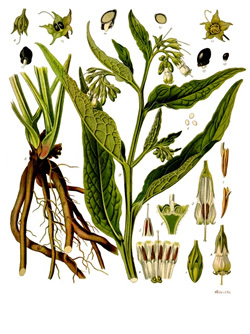


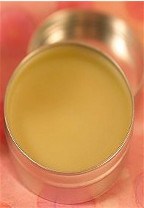

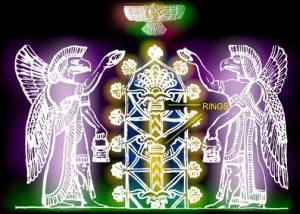
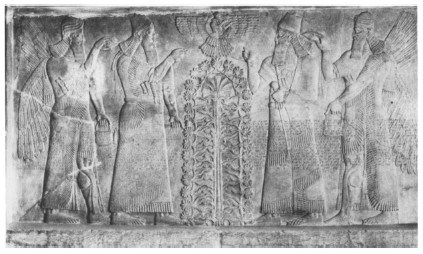
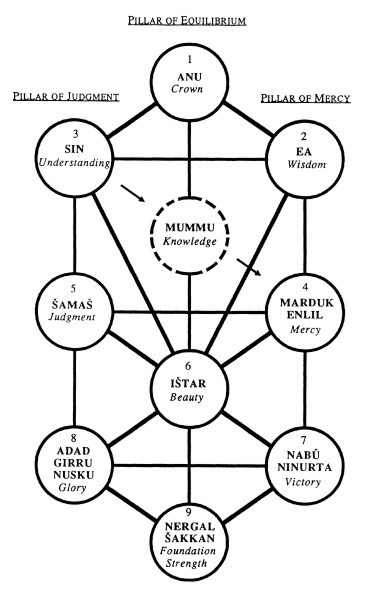

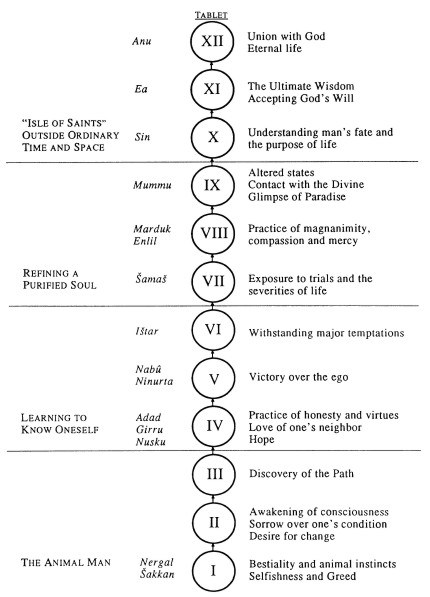

.gif)